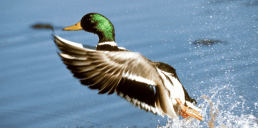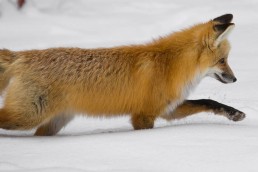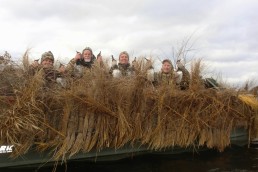When Hunting Waterfowl, Respect the Roost
SHARE THIS POST
For many, fall is for family outings. In ours, it’s a time when I get together with two of my brothers to hunt waterfowl and pheasants in the Dakotas. It was one day in mid-October when our first gathering took place. We were all interested in nailing down a good spot for the ducks or geese, but our scouting forays had not been all that productive. Although there were quite a number of ducks roosting on a big lake in the area, we couldn’t seem to get their feeding movements dialed in.
It was close to sunset when my brother Jeff and I pulled up on top of a hill near one of the ponds that we had permission to hunt. We had checked this water earlier in the day, but it held few birds.
As we zeroed in on the water below, we were both surprised at the number of diver ducks that dotted the small pond. We also witnessed a few good-sized flocks that were coming in from the big-roost lake nearby. As these ducks landed, others took flight and headed back to the big water for the night.
It was very obvious to us that this 15-acre pond had just the right combination of food to attract all of these divers. It was also obvious the birds were spending the day loafing on the big water and coming to this smaller location when it was time to feed.
Needless to say, the action we experienced from decoying ducks the following morning was quite impressive. As the flocks moved in to feed, we were set up and waiting.
Later in the season, just before freeze-up, we once again took advantage of the holding capabilities of the big-roost lake. This time, instead of diver ducks we targeted the mallards that were hitting the cornfields around the lake.
Are you enjoying this post?
You can be among the first to get the latest info on where to go, what to use and how to use it!
The evening of scouting would pay big dividends the following morning.
The concept of targeting birds coming off of larger water is something hunters have taken advantage of for years. Although the temptation may be great, if a person does not bust the roost, the birds can be hunted in that surrounding area for days.
My first real lesson in roost ponds came years ago while hunting in North Dakota. The farmer that gave us permission to hunt his land said everything was fair game except his biggest pond. When we asked him why that one was off limits he told us it was his roost pond. And he was right. The ducks moved off of that pond every morning and evening to feed on smaller, more fertile water. They rested undisturbed during the day, which kept them in the area for quite some time. He didn’t want hunting pressure on his smaller water forcing them to depart for an extended amount of time.
When hunters look at fall migration patterns, it is easy to find a number of factors that keep ducks moving south. Hunting pressure is certainly one of the variables that can push birds out in a hurry. But if the ducks have good feeding opportunities and daytime loafing areas, they will stick around a little bit longer to enjoy the easy meals.
By monitoring traditional roosting areas, hunters can often take advantage of the early morning and evening feeding movements without pushing the ducks out of the area. However, if you do burn the roost, those birds are likely gone for good.
MWO
SHARE THIS POST
Did you enjoy this post?
You can be among the first to get the latest info on where to go, what to use and how to use it!
Jerry Carlson
Jerry Carlson began his writing career in 1987 and covers both hunting and fishing topics. He currently writes for numerous media outlets and does radio work with WJON AM in St. Cloud, Minn. He has authored a book called Details for Locating and Catching Fish.



